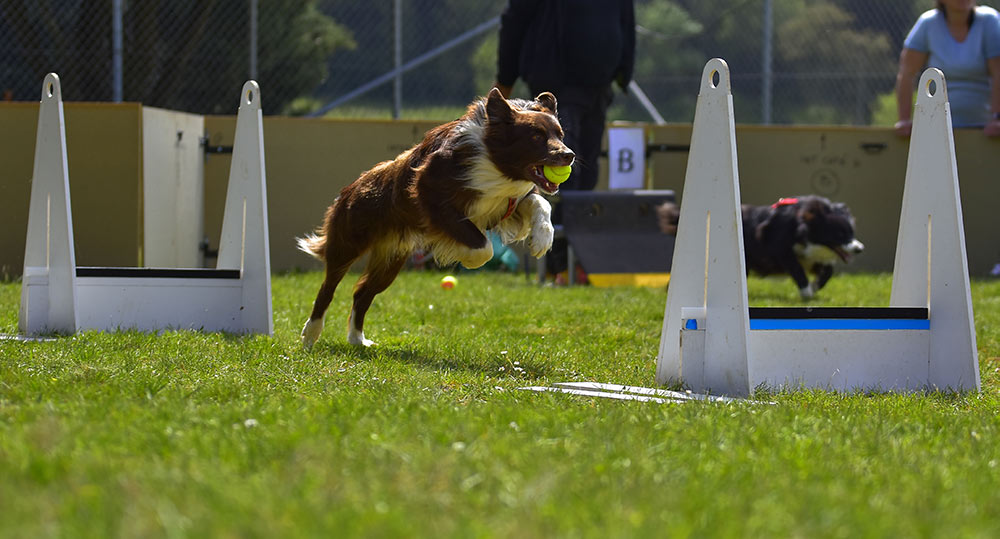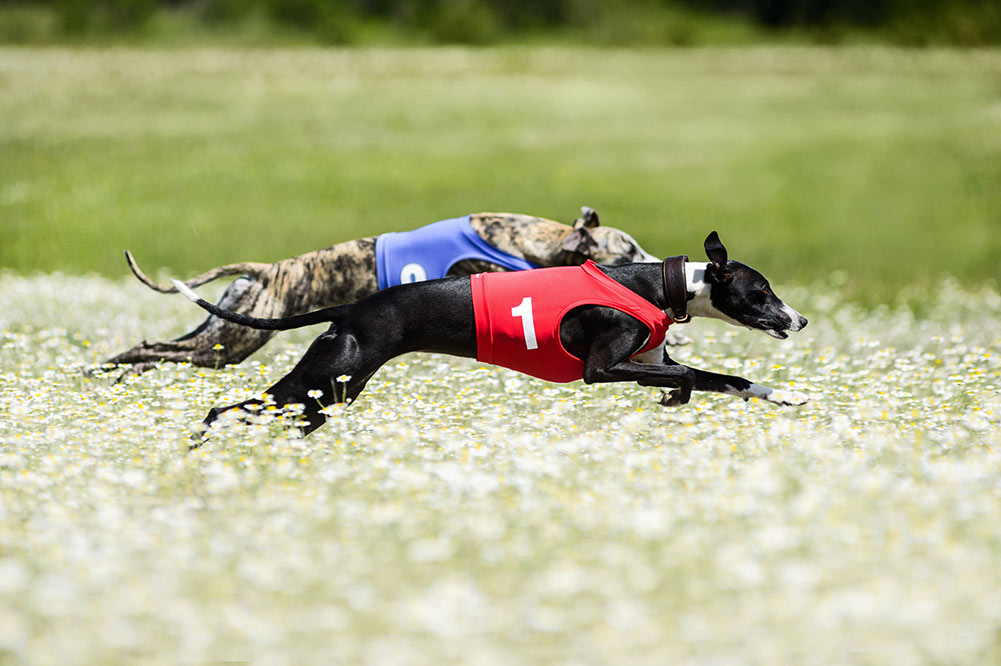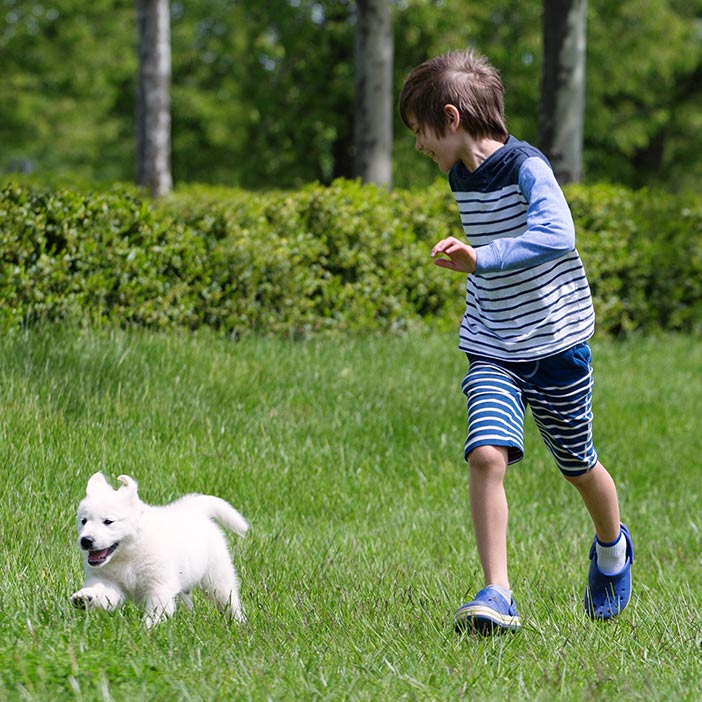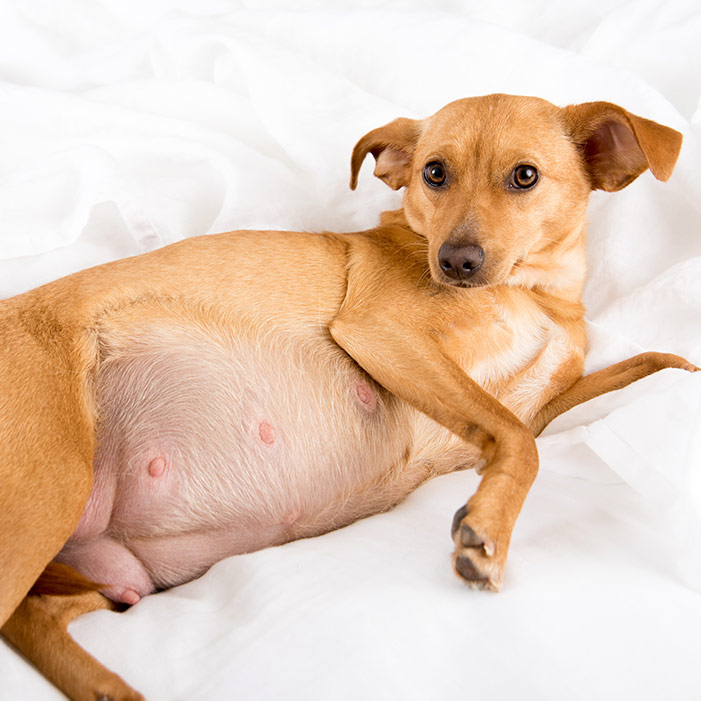How much exercise does my dog need?
Regular physical exercise is essential for the ongoing good health of your dog – and need we say for humans too! A very broad guideline is that the average adult dog requires at least thirty to sixty minutes of exercise per day. Despite this, many dogs are not walked regularly, and in particular, studies have found that small dogs are less likely to be walked than large dogs. Unfortunately, many people erroneously believe that a small dog does not need any exercise, when in fact, most small dogs require at least thirty minutes of exercise a day. However, a good exercise routine can be time-efficient, and for most dogs, even a short, brisk walk around the block in the morning and evening is far preferable to no exercise at all.
 While quality trumps quantity when it comes to exercise, there is no one-size-fits-all exercise prescription; factors such as breed, size and age of the dog must all come into consideration. While you, as the owner, are in the best position to understand the ideal exercise regime for your dog, before initiating any regular physical fitness programme for her, it is always best to consult your veterinarian to determine what is an appropriate amount of exercise. Your vet will evaluate her starting fitness level and guide you towards appropriate targets to work towards over a recommended period of time. If your dog has any health issues or special needs, the vet will take these into account and suggest the best fitness activities and duration to suit her particular requirements.
While quality trumps quantity when it comes to exercise, there is no one-size-fits-all exercise prescription; factors such as breed, size and age of the dog must all come into consideration. While you, as the owner, are in the best position to understand the ideal exercise regime for your dog, before initiating any regular physical fitness programme for her, it is always best to consult your veterinarian to determine what is an appropriate amount of exercise. Your vet will evaluate her starting fitness level and guide you towards appropriate targets to work towards over a recommended period of time. If your dog has any health issues or special needs, the vet will take these into account and suggest the best fitness activities and duration to suit her particular requirements.

When conditioning a dog to increase fitness, consistency is crucial to success. For example, it is far better to take a 20-minute walk every day than a 2-hour walk on Sundays. A slow, steady increase of time and intensity will help prevent injury and is more manageable and enjoyable for the dog. For dogs that require more intensive exercise, you can progress to more demanding activities like running, lure coursing, flyball or agility competition.
How does my dog’s breed affect her exercise needs?
Your dog’s breed is an important factor when determining both the intensity and duration of exercise she needs. High energy breeds, such as Border Collies and Labrador Retrievers, and other working breeds that have been bred for stamina, tend to benefit greatly if exercised intensely for an hour or more per day. On the other hand, some small dog breeds like Italian Greyhounds and Lhasa Apsos need far less exercise.
Many dog breeds were bred for a purpose or function, whether to be hunters, herders, trackers or guard dogs. Therefore, it makes sense to consider the breed’s traditional purpose and the typical amount of energy that would be expended in that occupation when deciding the type and amount of exercise to provide. For example, the sledding breeds might enjoy pulling carts, or running alongside their owner, while terriers might prefer sniffing out and catching “prey”, and herding breeds tend to be suited to focused training and agility. Breeds developed for short bursts of speed, such as Whippets and Greyhounds, prefer a shorter, faster, more intense workout, followed by a long nap, while those with strong neck and chest muscles such as American Pit Bull Terriers appear to enjoy the challenge of weight-pulling,

For many other dogs, moderate, low-impact daily physical exercise will keep her healthy and happy – 30 minutes to an hour of walking, socialising with other dogs, or playing games in the backyard is will meet her needs. And while some dogs are suited to all types of exercise, others are not. In particular, those with flat noses, like Pugs and Bulldogs, can have trouble breathing if the activity is too strenuous, and usually only require a short walk or two each day. Although active, breeds with long backs and short legs, such as Dachshunds and Welsh Corgies, may be prone to back injuries, so activities requiring jumping and twisting movements should be avoided.
Summary
Once your veterinarian gives you the go-ahead, look at your dog for guidance. The duration, intensity and type of play and exercise for your dog will depend on her breed, behavioural requirements and health limitations. Some dogs are true multi-sport athletes in fur, for whom almost any kind of exercise is great and more of it is even better. For other dogs, however, a slow ramble in the park each day, with plenty of opportunity to sniff and explore, may be much more to their liking. When determining the ideal fitness goals for your dog, allow your vet and common sense to guide you. The aim is to enrich the quality of life for your dog, not to create a canine athlete.
Learn more
- The importance of exercise for adult dogs
- How much exercise does my puppy need?
- How to exercise your puppy
- Exercising your senior dog
- Indoor workouts for dogs
- Brain workout – Mental exercise for dogs
- Dog sports: fun activities for dogs & owners
Bow Wow Meow Pet Insurance can help protect you and your dog should an unexpected trip to the vet occur.
-
Find out more about our dog insurance options
-
Get an online pet insurance quote
Bow Wow Meow is proud to have been awarded winner of Canstar’s ‘Most Satisfied Customers’ Award in the Pet Insurance category for both 2024 and 2025!
Bow Wow Meow is proud to have been chosen as Product Review’s Pet Insurance Award Winner every year from 2018 to 2025! This is based on 2,995 independent customer reviews (as at 21/01/2025), with an overall rating of 4.3*
Google Review rating = 4.5* (based on 968 reviews)
Trust Pilot rating = 4.6* (based on 531 reviews)
Bow Wow Meow is proud to have been chosen as Product Review’s Pet Insurance Award Winner every year from 2018 to 2025! This is based on 2,995 independent customer reviews (as at 21/01/2025), with an overall rating of 4.3*
Google Review rating = 4.5* (based on 968 reviews)
Trust Pilot rating = 4.6* (based on 531 reviews)
Bow Wow Meow has been chosen as a winner in the Finder Pet Insurance Awards 2024. Finder’s panel of experts analysed over 140 quotes to award our Ultimate Care Plan the winner of the “Pet Insurance – Value” category.







